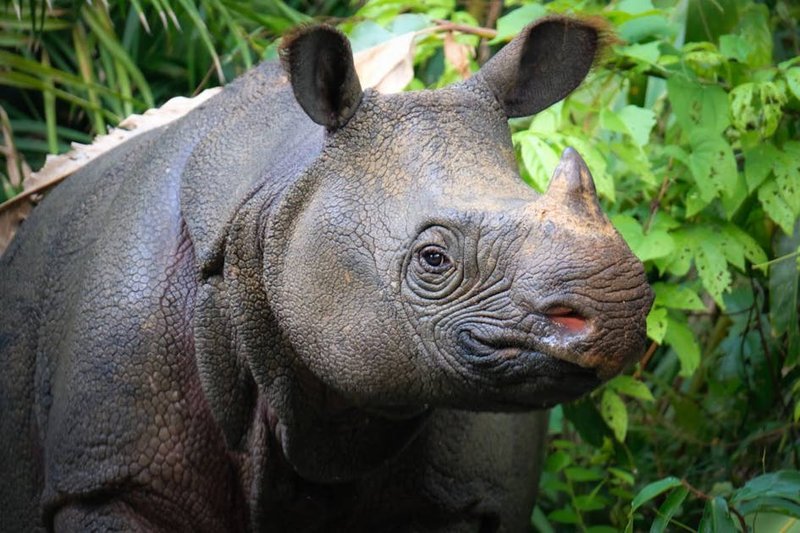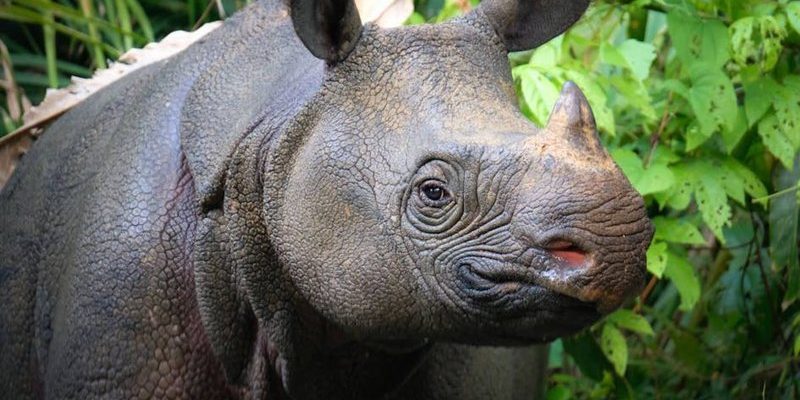
So, how do they do it? Simply put, the Javan rhino has developed unique survival strategies that help them navigate their environment. From their diet to their social behavior, every aspect plays a part in their survival. Let’s dive in to explore how these amazing animals manage to thrive where conditions can be tough.
Adaptations to Dense Forests
One of the most striking features of the Javan rhinoceros is its ability to adapt to dense tropical forests. These forests are a maze of green, filled with thick vegetation and towering trees. You might think that being such a large animal would make this environment tricky to navigate, but not for the Javan rhino.
Camouflage is one of their best friends. Their greyish-brown skin blends seamlessly into the earthy tones of the forest, making them less noticeable to predators and even humans. Plus, their skin has folds that give them a unique look, allowing them to move through thick underbrush with surprising ease. Imagine a large, living shadow gliding quietly through the woods—this is how they move.
Another remarkable adaptation is their sense of smell. The Javan rhino has an impressive olfactory system that helps them detect food and potential threats from a distance. This heightened sense allows them to navigate their environment safely, finding their way through the dense foliage without much trouble. It’s like having built-in GPS, guiding them through the complexity of their habitat.
Diet and Foraging Techniques
When it comes to survival, diet is key. Javan rhinoceroses are herbivores, primarily feeding on leaves, shrubs, and fruits they find in their forest home. You might be wondering how these big guys manage to find enough food in such a competitive environment.
They have a special knack for selecting the right plants. Javan rhinos often consume the leaves of certain trees, which are abundant in their habitat. Their digestive systems are well-adapted to break down tough plant material, allowing them to extract the nutrients they need efficiently. Imagine being a picky eater in a buffet—you would focus on that one dish that gives you the most energy!
It’s essential for them to have this selective foraging strategy since food sources can be limited, especially during dry seasons. They may even travel long distances to find the best food, which means they need to be resourceful and aware of their surroundings. This adaptability in their diet is crucial to their survival in unpredictable climates.
Water Sources and Hydration
Just like us, the Javan rhino needs water to survive. However, finding clean water in dense jungles can be challenging. These rhinos have learned how to navigate their habitat to locate water sources, whether it’s a muddy pool or a small stream.
They often create wallows, which are depressions in the ground that fill with rainwater. These wallows serve multiple purposes. First, they provide hydration, especially during dry spells when other water sources might dry up. Secondly, wallowing in mud helps keep their skin cool and protects them from sunburn and parasites. Imagine how refreshing it must feel to dive into a mud bath after a long day of foraging!
In addition to wallows, Javan rhinos are also known to be quite selective about their drinking habits. They prefer clean, fresh water and will avoid stagnant ponds. This natural instinct helps them stay healthy and hydrated, showcasing another layer of their survival strategy.
Social Behavior and Loneliness
You might think that living in groups would be the safest way for these rhinos to survive, but Javan rhinoceroses are mostly solitary creatures. They don’t form large herds like some other rhino species. Instead, they prefer a more independent lifestyle, which can be a double-edged sword.
Being solitary means they have to be mindful of their surroundings at all times. They rely on their acute senses to detect danger, whether it’s a predator or a human encroaching on their territory. This solitary behavior also gives them the freedom to roam vast areas in search of food and water, which is critical in harsh environments.
However, this independence comes with risks. With so few rhinos left in the wild, inbreeding has become a concern. Being alone can limit genetic diversity, which is essential for the health and resilience of a species. Conservation efforts are focused not just on protecting their habitat, but also on creating opportunities for these magnificent animals to interact and breed.
Conservation and Protection Strategies
As we’ve seen, Javan rhinoceroses have developed remarkable living strategies, but they still face significant threats. Habitat loss due to agriculture and human development has reduced their numbers drastically. Conservation efforts are crucial to ensure their survival, and several organizations are working tirelessly to protect these rare creatures.
The primary strategy involves creating and maintaining protected areas where Javan rhinos can live without the threat of poaching or habitat destruction. One notable example is Ujung Kulon National Park in Java, where most of the remaining Javan rhinos reside. This park provides a safe haven, where they can roam freely and thrive without human interference.
Another key part of their conservation is monitoring. Wildlife experts use tracking technology to keep an eye on rhino movements and health. This kind of surveillance helps conservationists understand their habits and needs better, allowing for more effective protection measures. It’s like having a dedicated team of protectors watching over them, ensuring they have a fighting chance against extinction.
Community Involvement and Awareness
Finally, the role of local communities in Javan rhino conservation cannot be underestimated. By engaging local people in conservation efforts, there’s a greater chance of success. When communities understand the importance of protecting these animals, they’re more likely to participate actively.
Educational programs can help raise awareness about the plight of the Javan rhino and the importance of biodiversity. When people are informed, they tend to become advocates, helping to spread the message further. It’s like building a network of supporters who care about the future of these incredible animals.
Additionally, by providing alternative livelihoods to local communities, conservation efforts can reduce reliance on activities that harm the environment. Sustainable farming and eco-tourism are examples of ways to support both people and wildlife. This kind of community involvement fosters a sense of ownership and responsibility, essential for the long-term survival of the Javan rhinoceros.
In conclusion, the survival of the Javan rhinoceros is a complex interplay of adaptations, behaviors, and conservation efforts. With only a handful of these incredible creatures left, each day is a testament to their resilience. By understanding how they survive in harsh environments, we can appreciate the urgent need for dedicated conservation efforts to protect them. The story of the Javan rhino is not just about survival; it’s about hope and the power of human action to make a difference.

